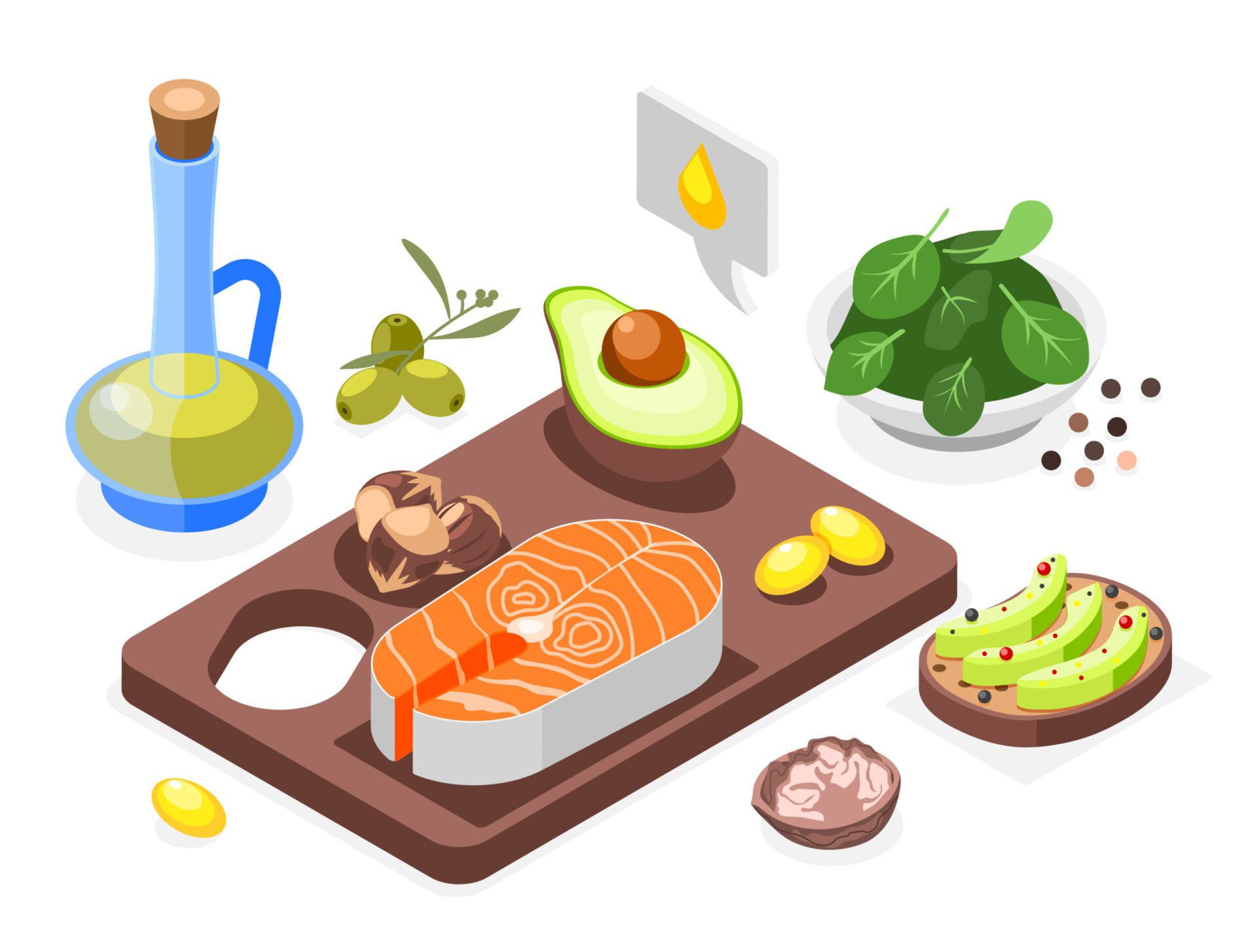Fats have long been a subject of debate in the world of nutrition. Once vilified as the primary cause of obesity and heart disease, recent research has brought a more nuanced understanding of fats and their role in a healthy diet. This blog delves into the different types of fats, their benefits and risks, and how to incorporate them wisely into your diet.
Fats are one of the three macronutrients, alongside carbohydrates and proteins, that are essential for a healthy diet. Despite their often negative reputation, fats play a crucial role in numerous bodily functions. In this detailed guide, we’ll explore what fats are, their types, their importance, how much you need, and the best sources to include in your diet.

Fats, also known as lipids, are organic compounds made up of carbon, hydrogen, and oxygen atoms. They are an essential source of energy and help the body absorb certain vitamins. Fats can be classified into four main types: saturated fats, unsaturated fats, trans fats, and cholesterol.
Types of Fats
- Saturated Fats:
- Structure: Have no double bonds between the carbon atoms of the fatty acid chain, meaning they are saturated with hydrogen atoms.
- Sources: Found in animal products like meat, butter, cheese, and dairy, as well as in some tropical oils like coconut oil and palm oil.
- Health Impact: Excessive consumption can raise LDL (bad) cholesterol levels and increase the risk of heart disease.
- Unsaturated Fats:
- Monounsaturated Fats:
- Structure: Have one double bond in the fatty acid chain.
- Sources: Olive oil, avocados, nuts, and seeds.
- Health Impact: Can help reduce LDL cholesterol levels and lower the risk of heart disease.
- Polyunsaturated Fats:
- Structure: Have more than one double bond in the fatty acid chain.
- Sources: Fish, flaxseeds, walnuts, and sunflower oil.
- Health Impact: Provide essential fatty acids like omega-3 and omega-6, which are crucial for brain function and cell growth.
- Monounsaturated Fats:
- Trans Fats:
- Structure: Unsaturated fats that have been hydrogenated to make them more solid and shelf-stable.
- Sources: Found in many processed foods, such as margarine, baked goods, and fried foods.
- Health Impact: Increase LDL cholesterol and decrease HDL (good) cholesterol, significantly raising the risk of heart disease.
- Cholesterol:
- Structure: A type of fat produced by the liver and found in animal products.
- Sources: Meat, dairy products, and eggs.
- Health Impact: Necessary for building cells and producing hormones, but high levels can lead to heart disease.
Why Are Fats Important?
- Energy Source: Fats provide a concentrated source of energy, with each gram of fat supplying 9 calories, more than double that provided by carbohydrates or proteins.
- Nutrient Absorption: Fats help the body absorb fat-soluble vitamins (A, D, E, and K).
- Cell Structure: Fats are a critical component of cell membranes, aiding in maintaining their integrity and functionality.
- Hormone Production: Fats are involved in the production of essential hormones that regulate bodily processes.
- Insulation and Protection: Fats provide insulation to help maintain body temperature and protect vital organs.
How Much Fat Do You Need?
The amount of fat you need can vary based on age, sex, activity level, and overall health. General guidelines include:
- Dietary Guidelines for Americans: Recommend that 20-35% of your total daily calories come from fat.
- For a 2000-Calorie Diet: This translates to about 44-78 grams of fat per day.
It’s important to focus on the quality of fats rather than just the quantity.
Best Sources of Healthy Fats
- Olive Oil: Rich in monounsaturated fats and antioxidants.
- Avocados: Packed with heart-healthy monounsaturated fats, fiber, and vitamins.
- Nuts and Seeds: Provide a mix of monounsaturated and polyunsaturated fats, along with protein and fiber.
- Fatty Fish: Salmon, mackerel, and sardines are excellent sources of omega-3 fatty acids.
- Chia Seeds and Flaxseeds: High in omega-3 fatty acids and fiber.
- Dark Chocolate: Contains healthy fats and antioxidants when consumed in moderation.
Balancing Your Intake
- Choose Healthy Fats: Opt for unsaturated fats from plant-based sources and fatty fish.
- Limit Saturated Fats: Reduce intake of red meat, full-fat dairy products, and tropical oils.
- Avoid Trans Fats: Check food labels for hydrogenated oils and limit processed and fried foods.
- Moderation is Key: Even healthy fats are calorie-dense, so portion control is important to maintain a balanced diet.
Potential Risks of Low-Fat Diets
While reducing intake can be beneficial for some individuals, extremely low-fat diets can pose risks:
- Nutrient Deficiencies: Fat-soluble vitamins (A, D, E, and K) may not be adequately absorbed.
- Hormonal Imbalance: Fats are necessary for hormone production, and insufficient intake can disrupt hormonal balance.
- Increased Cravings: Low-fat diets can lead to increased cravings for high-sugar foods, potentially resulting in weight gain.
- Weight Gain: Fats are calorie-dense. Overconsumption, even of healthy fats, can lead to weight gain if not balanced with other nutrients and physical activity.
- Heart Disease: High intake of saturated and trans fats is linked to increased cholesterol levels and heart disease risk. It’s crucial to limit these fats and focus on healthier options.
Tips for a Balanced Intake
- Choose Healthy Sources: opt for fats from whole foods like nuts, seeds, avocados, and fatty fish. Use olive oil or avocado oil for cooking instead of butter or margarine.
- Limit Processed Foods: Reduce intake of trans fats by avoiding processed and fried foods. Check food labels for partially hydrogenated oils.
- Balance with Other Nutrients: Ensure a balanced diet that includes plenty of fruits, vegetables, whole grains, and lean proteins.
- Watch Portion Sizes: Even healthy fats should be eaten in moderation. Pay attention to portion sizes to avoid excessive calorie intake.
Conclusion
Fats are an essential part of a healthy diet, providing energy, supporting cell function, and aiding in the absorption of vital nutrients. By understanding the different types of fats and their roles, you can make informed choices that promote overall health and well-being. Focus on incorporating healthy fats from natural sources while limiting saturated and trans fats to maintain a balanced and nutritious diet.
Do Follow
https://medlineplus.gov/healthtopics.html
https://en.wikipedia.org/wiki/Fat
